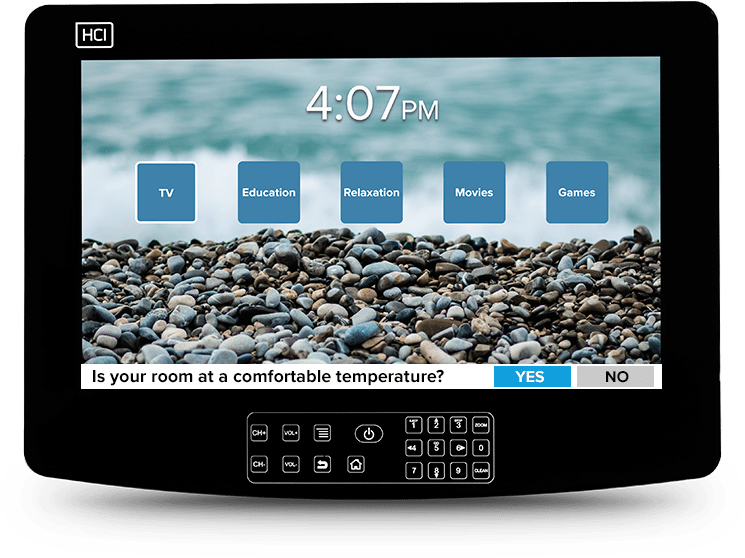Imagine a healthcare system with equal opportunities for both populated urban centers and isolated communities, where world-class medical specialists consult with rural hospital staff to pin down a tricky diagnosis or recommend a cutting edge treatment. Imagine secure, HIPAA-compliant channels for patients, families and care teams to meet remotely, or mental health services delivered directly to a patient where they are most comfortable and able to receive it.
This is telehealth — modern video-enabled healthcare that provides affordable access to quality care using 21st century communications and teleconferencing products. Here’s how:
Workflows
Telehealth improves patient trust and creates better workplace satisfaction for nursing and administrative teams by providing:
- Video monitoring in patient rooms
- Clear and immediate coordination between care teams, patients, and family via digital screens
- Streamlined options for rounds and medication scheduling
- Digital charting
- Chronic care Follow up visits
Care in Underserved Areas
By connecting rural hospitals and clinics with specialists and clinicians hundreds of miles away, telehealth affordably delivers patient-centered care without the expense of travel or patient transport.
Technological advances such as Bluetooth-enabled electronic stethoscopes and video monitoring units increases remote physicians’ diagnostic abilities. By fostering collaboration between teams and offering a broader field of expertise, underserved areas receive the same level of care as their urban counterparts.
Mental Health Services
Particularly in isolated communities, telehealth brings care to patients in-home or in clinics where mental health care professionals may be scarce. Patients can access services comparable to those received in person via video conferencing.
Disaster Response
In addition to the same distance-bridging benefits mentioned above, telehealth technologies give aid and healthcare workers real-time assessment and coordination opportunities. This lowers response times and prioritizes resources in the event of a disaster.
Continuing Education
Telehealth technologies increase and simplify training opportunities for healthcare professionals by optimizing video conferencing. Preventative care information is deliverable to high-risk patients, and health education and programs are made available to remote locations using streamable or live video feeds.
Telehealth technology has many aspects, only a few of which are highlighted here. Modern video conferencing technology is flexible and adaptable. If you can envision it, DGI can make it happen. Imagine a more efficient, collaborative, patient-centered future for your healthcare facility, and we’ll help you bring it to life.

